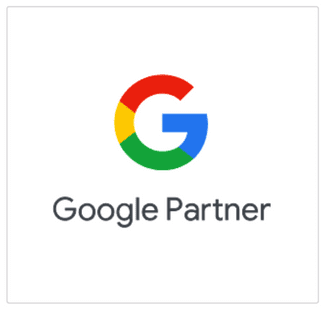Do you know how to attract attention from the first words? If not, you have a problem… but wait, don’t close the tab yet!
See? I got your attention. You’re here because you want to write better copy, but the truth is that even the best product in the world goes unnoticed if the message doesn’t get through. And in a world where every scroll brings an avalanche of ads, only the ones that strike directly at curiosity and emotion survive.
Want to know how to write copy that not only catches the eye, but also sells? Let me show you some copywriting tricks that really work.

1. Know your target audience
If you don’t know who you’re talking to, the chances of your message working are almost zero. Good copy isn’t about you or your product – it’s about the customer and how you solve their problem. People don’t want to hear how great you are, they want to know what you have for them. So before you write the first word, ask yourself some essential questions: Who is your audience? What are their needs? What motivates them to buy? What problems are they trying to solve? A generic message will never have the same impact as one that speaks your audience’s language. Use reviews, surveys and customer feedback to get a better understanding of what they want and tailor your tone accordingly. If you’re selling B2B software, a professional tone may be more appropriate, but if you’re advertising for a fashion brand on Instagram, the approach should be relaxed and friendly. The better you manage to get inside the mind of your audience, the more impactful your copy will be.
2. Create engaging headlines
You only have a few seconds to grab the reader’s attention. If your headline doesn’t grab it the first time, you’ve lost the game before it starts. This is where hooks come in, those first words that make the reader want more. Whether you’re writing a Facebook ad, a sales email or an article headline, the hook is what convinces someone to continue. Without a good hook, the rest of your text becomes irrelevant – because no one will read it.
What makes a good hook?
-
- It must arouse curiosity (“Nobody talks about it, but…”)
-
- Promise value (“5 simple tricks for copy that sells”)
-
- Hit a powerful emotion (“Do you feel your ads aren’t working? Here’s why.”)
Effective techniques for captivating headlines
✅ Use numbers – Number structures are easy to digest and provide clarity:
-
- “7 mistakes you make in copywriting (and how to fix them)”
-
- “3 quick ways you can double your conversions”
✅ Spark curiosity – People are tempted to find out things they don’t know:
-
- “The mistake 90% of copywriters make”
-
- “Why do most ads fail before they start?”
✅ Address a need or problem directly – Customers want solutions, not just information:
-
- “How to increase sales with better copy”
-
- “Writing ads and not getting conversions? Here’s what you’re doing wrong.”
Let’s take a quick look at the most creative campaigns that used a captivating hook:
“Because you’re worth it.” – L’Oréal
-
- This slogan is a perfect example of an emotional hook. It speaks directly to the consumer, gives them validation and makes them feel they deserve the best. It doesn’t talk about the product, but the emotion it conveys.
“Got Milk?” – California Milk Processor Board
-
- A simple, yet extremely powerful question. Instantly creates a connection, makes people wonder if they have milk in the fridge and triggers a need.
“Think Different.” – Apple
-
- Short, memorable and powerful. Apple isn’t selling products, it’s selling a mindset, a membership in a group of people who “Think Different.” This is an aspirational hook that makes customers identify with the brand.
“What happens in Vegas, stays in Vegas.”
-
- This hook works because it fuels mystery and adventure. It makes people feel special and encourages impulsive behavior – exactly what the brand wants.
“Melts in your mouth, not in your hands.” – M&M’s
-
- A hook that highlights a clear benefit. Promotes a better experience than other chocolatiers, emphasizing a unique product advantage.
3. Keeps the message clear and concise
You know that moment when you see a text so long and complicated that you give up after the first two lines? That’s exactly what you need to avoid in copywriting. People don’t have time (or patience) for unnecessary explanations, mile-long sentences and technical jargon. If your message isn’t clear the first time, you’ve lost the customer.
Good copy is like a conversation with a friend: simple, direct and easy to understand. Avoid pompous expressions and overly long sentences – if you can say the same thing in fewer words, do it without hesitation. Readers don’t want to decipher a grammar puzzle, they want to find the information they need quickly.
A good trick is to read your text out loud: if it sounds artificial or too complicated, rewrite it more simply. Also, use structures that make it easier to read, such as short sentences, bullet points and streamlined paragraphs. In copywriting, clarity is the key to success – the easier your message is to understand, the faster it will persuade.
4. Emphasize benefits, not features
One of the biggest mistakes in copywriting is to focus on product features instead of emphasizing the benefits to the customer. People don’t buy products for what they are, but for what they can do for them. They don’t care that your phone has a 5000mAh battery – they care that they won’t run out of battery in the middle of the day.
Let’s take a simple example:
❌ Feature: “This laptop has a state-of-the-art processor.”
✅ Benefit: “You work faster and more efficiently thanks to the state-of-the-art processor.”
See the difference? The first version is just cold, impersonal, technical information. The second directly explains why that feature matters to the customer and how it improves their life.
When writing copy, always ask yourself the question: “So what?”. If you can link every feature of your product to a real benefit for the customer, you’ve already won half the battle. Don’t sell specs, sell results, experiences and emotions.

5. Use social proof
People trust other people, not advertisements. That’s why testimonials, reviews and statistics are some of the most powerful persuasion tools. If they see that others have been satisfied, customers will be more willing to buy.
Include in your copy phrases such as “Over 10,000 satisfied customers ” or “93% of users noticed an improvement after the first month”. Figures inspire confidence and eliminate hesitation.
A classic example is Amazon’s strategy: every product has visible reviews, and those with many stars are automatically more attractive. Likewise Nike, which uses testimonials from famous athletes to demonstrate the performance of its products.
If you want your message to be compelling, let satisfied customers speak for you.
6. Create a sense of urgency
If a customer thinks they can always come back to buy, they may not come back at all. Limited offers and messages that suggest scarcity can make them act immediately.
Use phrases like:
🔴 “Discount available today only!”
🔴 “Only 3 pieces left in stock!”
🔴 “Offer expires at midnight!”
Think about Booking.com: how many times have you booked a hotel just because you saw the message “Last room available!”? Exactly. Urgency creates FOMO (Fear of Missing Out) and pushes customers to take action.
7. Use conversational language
No one likes reading text that sounds like an instruction manual. People respond better to a friendly, relaxed tone that seems to speak directly to them.
Avoid unnecessary jargon and stiff expressions. Instead of “Our process optimization solutions improve productivity”, it’s better to say “We help you work faster and more efficiently”.
A good example is Mailchimp’s brand communication strategy. Instead of corporate messages, they use a warm and friendly tone: “Send better emails. It’s easy and we’ll show you how.”
The rule is simple: if your text sounds like natural conversation, you’re on the right track.
8. Include a strong Call-to-Action (CTA)
If you don’t tell the reader what to do next, they might not do anything. A good CTA guides action and turns a passive reader into an active customer.
📌 “Buy today, save 50%! Order now.”
📌 “Sign up for free and get started today!”
📌 “Learn more – Click here!”
Think of the big green button on Spotify: “Get Premium”. Simple, clear, action-oriented. That’s what any CTA should do – eliminate confusion and push the customer to the next step.
Want copy that really sells? We know the recipe!
You’ve learned how to write better copy, but if you want copy that not only attracts, but also sells, you need more than just tricks. You need a strategy, continuous testing and a team that knows exactly what works.
That’s where we come in – online marketing agency re7consulting. We create copy that converts, ads that grab attention and blog posts that don’t just fill a website, but bring real value to your readers and your brand.
We know exactly how to do this. You have the business, we have the right words to make it grow. Let’s work together!







